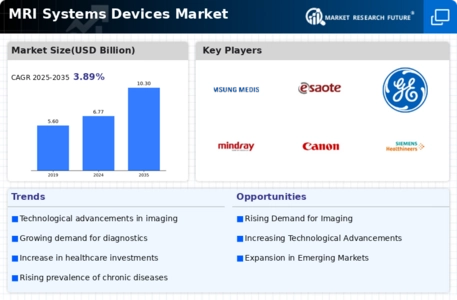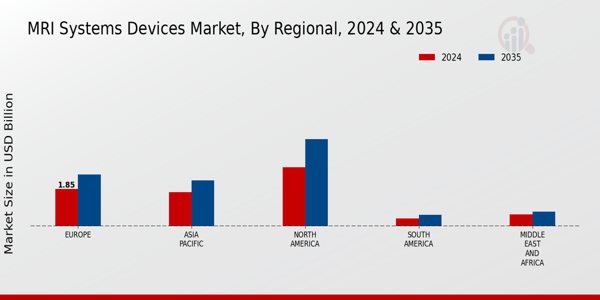The MRI Systems Devices Market is a highly competitive landscape characterized by a diverse array of players contributing to advancements in imaging technology. This market is driven by a continual demand for high-quality diagnostic tools in healthcare systems worldwide, particularly as the emphasis on early disease detection grows.
The landscape includes large multinational corporations as well as specialized firms, each striving to leverage innovative technologies, strategic partnerships, and enhanced customer service to establish a competitive edge.
Key factors influencing market dynamics include rapid technological advancements, significant regulatory developments, expansion of healthcare infrastructure, and an increasing patient demographic that necessitates enhanced imaging solutions.
As firms vie for market share, a strong focus is placed on product differentiation, superior quality, and service delivery, leading to incremental advancements in MRI systems.
Samsung Medison stands as a formidable entity in the MRI Systems Devices Market, with a robust reputation for delivering high-performance imaging solutions. The company benefits from a well-established market presence, leveraging its extensive experience and technological prowess to develop MRI systems that cater to a wide range of clinical needs.
Among its strengths is the implementation of advanced imaging technologies that improve diagnostic accuracy and patient outcomes, including features that enhance operational efficiency within healthcare facilities.
Samsung Medison has also demonstrated a dedication to research and development, ensuring that its products remain at the forefront of innovation. This commitment not only aids in product differentiation but also solidifies the company’s standing in a competitive market, enabling it to maintain strong relationships with healthcare providers and industry stakeholders globally.
United Imaging Healthcare has carved a niche for itself in the MRI Systems Devices Market, standing out for its comprehensive suite of imaging solutions designed to meet the evolving demands of medical imaging. The company offers a wide range of products, including cutting-edge MRI machines, which are noted for their superior image quality and patient comfort.
United Imaging Healthcare strengthens its market position through strategic alliances and partnerships, which enhance its innovation capabilities and expand its global reach. The company invests heavily in research and development, focusing on next-generation imaging technologies that provide significant advancements over traditional MRI systems.
Their marketing strategy emphasizes customization and flexibility, resonating well with healthcare systems looking for tailored solutions. United Imaging Healthcare's continued commitment to improving patient outcomes and operational efficiency makes it a competitive player in the global market, while their pursuit of mergers and acquisitions further cements their growth trajectory in MRI technology.























Leave a Comment